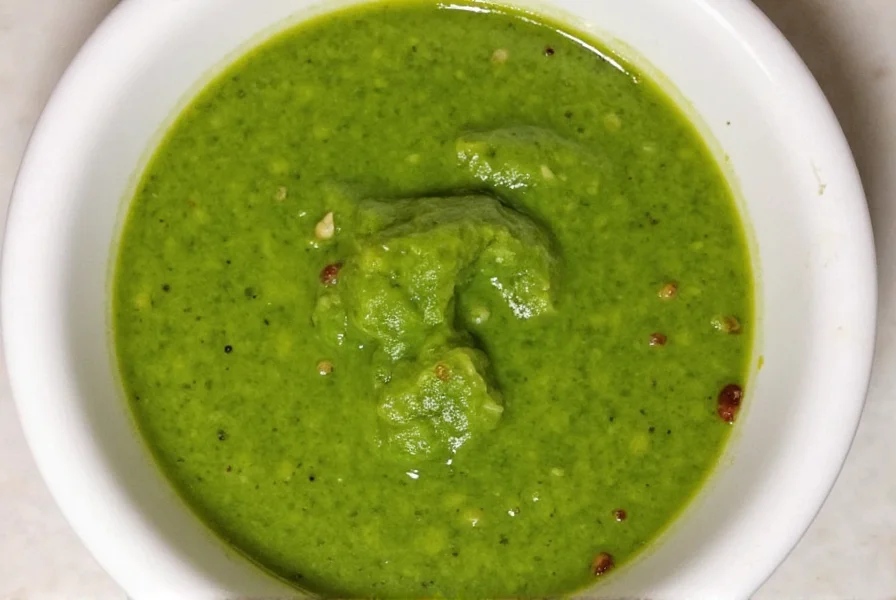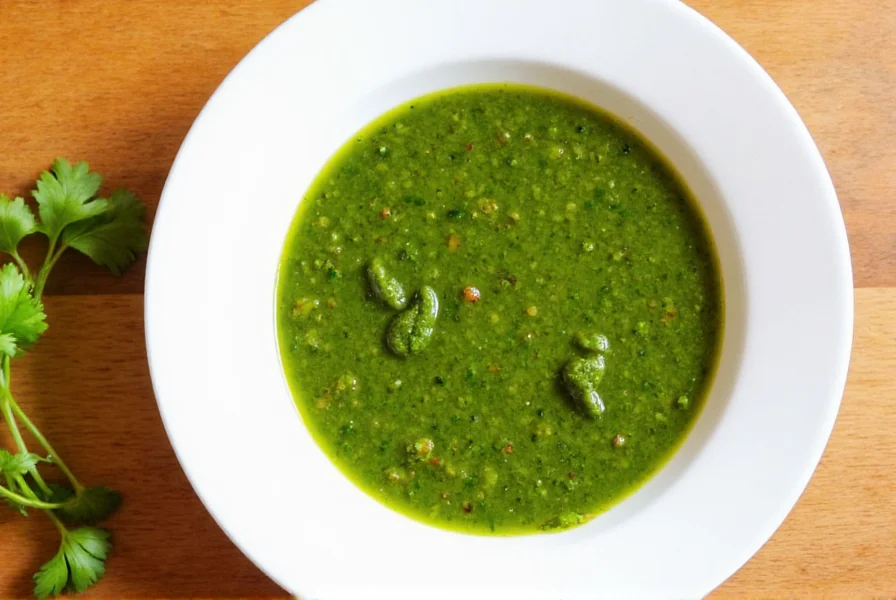Coriander chutney forms the backbone of countless Indian meals, delivering a burst of fresh flavor that elevates simple dishes to extraordinary heights. This versatile condiment has been a staple in Indian kitchens for generations, with regional variations reflecting local tastes and available ingredients. Unlike store-bought alternatives that often contain preservatives and artificial flavors, homemade coriander chutney offers pure, vibrant taste with complete control over ingredients and spice levels.
What sets exceptional coriander chutney apart isn't just the ingredients but the technique. The magic happens when fresh coriander leaves meet the right balance of tangy elements and aromatic spices. Many home cooks struggle with common issues like bitterness, separation, or rapid discoloration, but these challenges have simple solutions that transform ordinary chutney into something extraordinary.
The Essential Ingredients Breakdown
Understanding each component's role ensures perfect results every time. While basic recipes exist, knowing why certain ingredients work together creates culinary confidence.
| Ingredient | Function | Substitution Options |
|---|---|---|
| Fresh coriander leaves | Primary flavor base, vibrant color | Partial substitution with parsley (not recommended for authentic taste) |
| Fresh mint leaves | Balances bitterness, adds complexity | None (omit for pure coriander version) |
| Green chilies | Heat element, flavor depth | 1/4 tsp red chili powder (use sparingly) |
| Tamarind or lemon juice | Tanginess, preservation | Vinegar (1:1 ratio), amchur (dry mango powder) |
| Roasted cumin powder | Earthy undertone, aroma | None (essential for authentic flavor) |
Step-by-Step Preparation Guide
Follow these professional techniques for consistently perfect coriander chutney that maintains its vibrant green color and fresh flavor.

Traditional Grinding Method
- Wash 2 cups fresh coriander leaves and 1/2 cup mint leaves thoroughly, then pat completely dry
- Remove thick stems which can cause bitterness
- Combine with 1-2 green chilies (depending on heat preference), 1 tsp lemon juice, and 1/4 cup water in a blender
- Pulse until coarsely chopped, then blend in short bursts to prevent overheating
- Add 1/2 tsp roasted cumin powder and salt to taste
- Continue blending until smooth, scraping down sides as needed
- For optimal texture, transfer to a mortar and pestle for final grinding
Pro Tips for Perfect Results
- Prevent discoloration: Add lemon juice immediately after blending and store in airtight containers
- Avoid bitterness: Use young, tender coriander leaves and remove thick stems
- Texture control: For dipping sauces, keep slightly thicker; for drizzling, add 1-2 tbsp additional water
- Flavor development: Let chutney rest for 15 minutes before serving to allow flavors to meld
Versatile Serving Suggestions
While traditionally served with South Indian breakfast items, modern applications have expanded this chutney's culinary reach significantly. The best coriander mint chutney adapts beautifully to various meal contexts:
- Classic pairings: Dosas, idlis, vadas, and uttapams
- Modern applications: Sandwich spreads, salad dressings, marinades for grilled proteins
- Regional variations: Add coconut in Kerala style, tamarind in Tamil Nadu versions, or yogurt in North Indian adaptations
- Flavor booster: Mix with yogurt for raita or thin with water for a refreshing summer drink
Storage and Shelf Life Optimization
Proper storage techniques dramatically extend coriander chutney storage tips beyond typical expectations. Follow these science-backed methods:
- Store in glass containers with tight-fitting lids to minimize oxidation
- Top with a thin layer of lemon juice before sealing to create a protective barrier
- Refrigerate immediately after preparation for maximum freshness
- Consume within 3-5 days for optimal flavor and color
- For longer preservation, freeze in ice cube trays then transfer to freezer bags
Nutritional Profile and Health Benefits
Understanding the coriander chutney health benefits reveals why this condiment deserves regular rotation in your meal planning. Each tablespoon delivers:
- Rich in vitamin K (20% of daily value) for bone health
- Significant vitamin A content from fresh herbs
- Natural antioxidants that combat inflammation
- Low calorie count (approximately 5 calories per tablespoon)
- Digestive enzymes that aid nutrient absorption
Troubleshooting Common Issues
Even experienced cooks encounter challenges with coriander chutney troubleshooting. Here's how to solve frequent problems:
| Issue | Immediate Fix | Prevention Strategy |
|---|---|---|
| Bitter taste | Add 1/4 tsp sugar or extra lemon juice | Remove thick stems, use young leaves |
| Watery consistency | Add roasted chana dal (1 tsp) | Dry leaves thoroughly before processing |
| Rapid discoloration | Stir in fresh lemon juice | Store with protective acid layer, use airtight container |
| Weak flavor | Add pinch of sugar and extra cumin | Use fresh, high-quality ingredients; don't over-dilute |

Regional Variations Across India
The beauty of traditional Indian coriander chutney lies in its regional adaptations. Each area adds distinctive elements reflecting local agriculture and taste preferences:
- South Indian style: Often includes coconut and tamarind for balanced tanginess
- Gujarati version: Incorporates dates or jaggery for subtle sweetness
- Punjabi adaptation: Blended with yogurt for a cooling effect
- Coastal variations: Features kokum or raw mango for distinctive sour notes
Frequently Asked Questions
Can I make coriander chutney without mint leaves?
Yes, authentic coriander chutney can be made without mint leaves. While mint adds complexity, pure coriander chutney offers a more focused herbal flavor. Simply increase the coriander quantity by 25% to compensate for the missing mint and add an extra green chili for depth of flavor.
Why does my coriander chutney turn brown so quickly?
Coriander chutney discolors due to oxidation when exposed to air. To prevent this, always add lemon juice immediately after blending, store in airtight containers with minimal headspace, and place plastic wrap directly on the chutney surface before sealing. Using chilled containers and storing at the back of the refrigerator (not the door) also helps maintain color.
What's the best way to freeze coriander chutney for long-term storage?
For optimal freezing results, portion the chutney into ice cube trays, cover with plastic wrap, and freeze solid. Once frozen, transfer cubes to labeled freezer bags, removing as much air as possible. Properly frozen coriander chutney maintains quality for 3-4 months. Thaw individual cubes as needed rather than the entire batch.
Can I use dried coriander instead of fresh for chutney?
Dried coriander cannot substitute for fresh in chutney preparation. The essential oils and moisture content in fresh leaves create the distinctive flavor and texture that dried coriander lacks. Attempting to use dried coriander would result in a completely different product without the vibrant color or fresh taste that defines authentic coriander chutney.
How can I make coriander chutney less spicy without losing flavor?
To reduce spiciness while maintaining flavor complexity, remove the seeds from green chilies before blending. Alternatively, use milder varieties like banana peppers instead of standard green chilies. Adding 1/4 teaspoon of sugar balances heat without making the chutney sweet, while extra lemon juice provides counterpoint to the spiciness through acidity.











 浙公网安备
33010002000092号
浙公网安备
33010002000092号 浙B2-20120091-4
浙B2-20120091-4